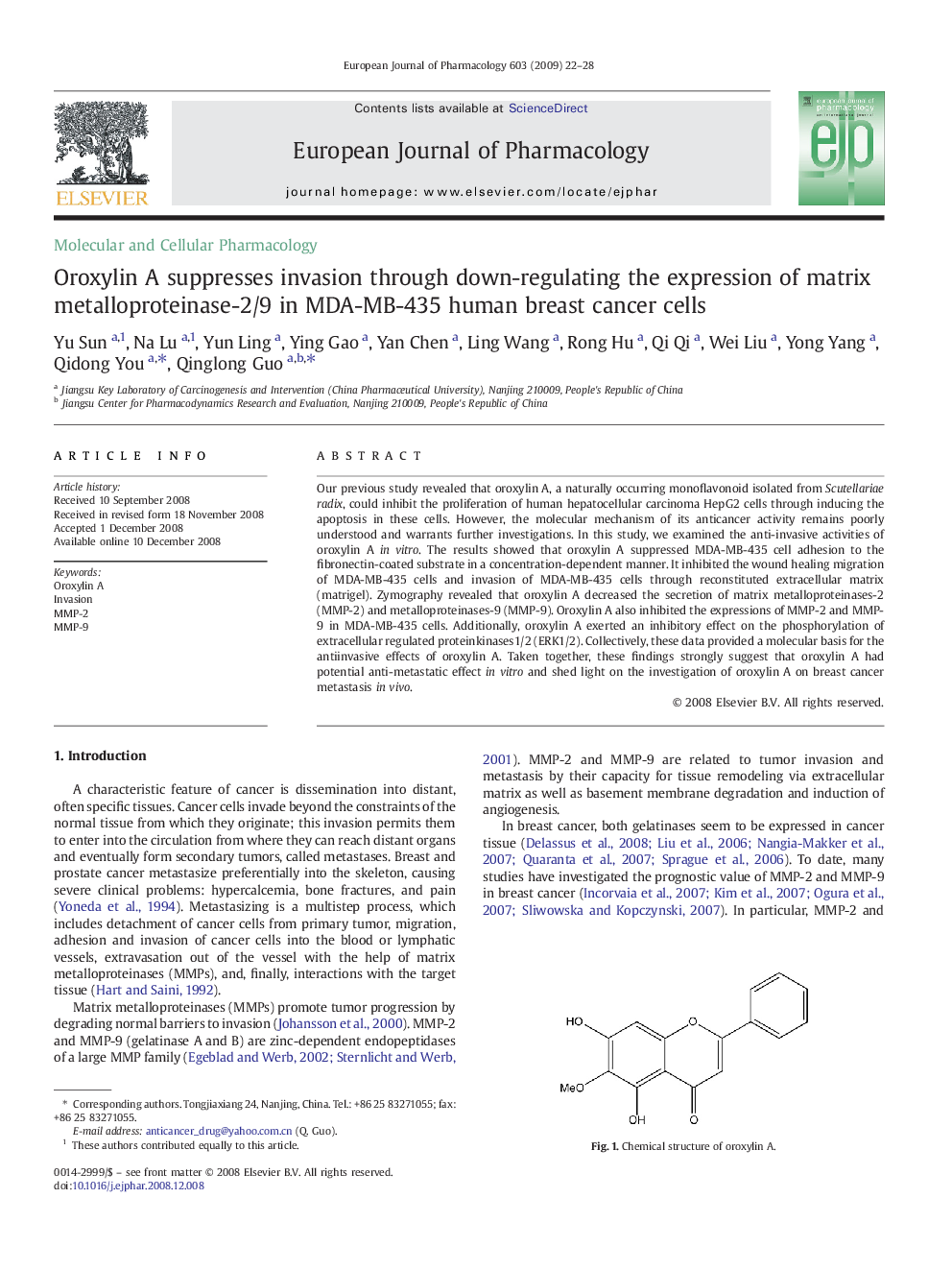| Article ID | Journal | Published Year | Pages | File Type |
|---|---|---|---|---|
| 2534470 | European Journal of Pharmacology | 2009 | 7 Pages |
Our previous study revealed that oroxylin A, a naturally occurring monoflavonoid isolated from Scutellariae radix, could inhibit the proliferation of human hepatocellular carcinoma HepG2 cells through inducing the apoptosis in these cells. However, the molecular mechanism of its anticancer activity remains poorly understood and warrants further investigations. In this study, we examined the anti-invasive activities of oroxylin A in vitro. The results showed that oroxylin A suppressed MDA-MB-435 cell adhesion to the fibronectin-coated substrate in a concentration-dependent manner. It inhibited the wound healing migration of MDA-MB-435 cells and invasion of MDA-MB-435 cells through reconstituted extracellular matrix (matrigel). Zymography revealed that oroxylin A decreased the secretion of matrix metalloproteinases-2 (MMP-2) and metalloproteinases-9 (MMP-9). Oroxylin A also inhibited the expressions of MMP-2 and MMP-9 in MDA-MB-435 cells. Additionally, oroxylin A exerted an inhibitory effect on the phosphorylation of extracellular regulated proteinkinases1/2 (ERK1/2). Collectively, these data provided a molecular basis for the antiinvasive effects of oroxylin A. Taken together, these findings strongly suggest that oroxylin A had potential anti-metastatic effect in vitro and shed light on the investigation of oroxylin A on breast cancer metastasis in vivo.
